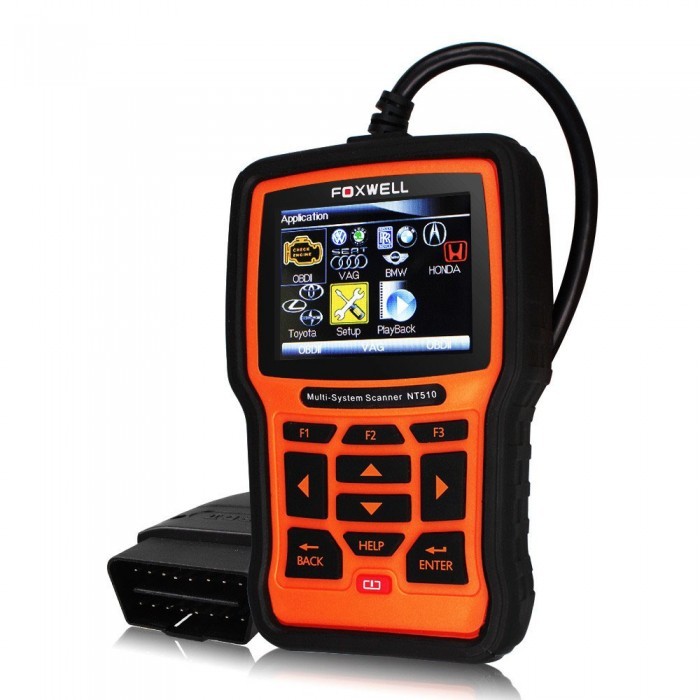Modern Aston Martins, like many contemporary vehicles, are sophisticated machines relying heavily on onboard computer systems. Understanding your Aston Martin’s health and performance requires accessing this digital intelligence, and that’s where an OBD2 scanner becomes indispensable. This guide will help you navigate the world of OBD2 scanners and choose the right tool to communicate with your cherished Aston Martin.
Why You Need an OBD2 Scanner for Your Aston Martin
An OBD2 (On-Board Diagnostics II) scanner is essentially a translator, allowing you to speak the language of your car’s computer. It plugs into the OBD2 port, typically located under the dashboard, and retrieves diagnostic trouble codes (DTCs) and live data. For Aston Martin owners, this capability is invaluable for several reasons:
- Early Issue Detection: Catch minor problems before they escalate into costly repairs. An OBD2 scanner can alert you to issues you might not even be aware of.
- DIY Diagnostics and Repair: For the hands-on Aston Martin enthusiast, an OBD2 scanner empowers you to diagnose problems yourself, potentially saving money on garage visits and enabling informed discussions with mechanics.
- Performance Monitoring: Many scanners display live data, allowing you to monitor engine performance parameters in real-time, such as engine temperature, RPM, and sensor readings. This is crucial for maintaining peak performance and identifying anomalies.
- Aston Martin Specific Insights: While generic OBD2 scanners offer basic functionality, specialized scanners like the Foxwell NT510 can access Aston Martin-specific codes and systems, providing a deeper level of diagnostic capability.
Choosing the Right OBD2 Scanner for Your Aston Martin
While any OBD2 scanner will offer some basic functionality, for Aston Martins, opting for a model with enhanced capabilities is highly recommended. Here’s why:
- Aston Martin Specific Protocols: Aston Martins utilize specific diagnostic protocols. A generic scanner might only access basic OBD2 functions, missing out on crucial manufacturer-specific data.
- Control Module Access: Advanced scanners can communicate with various control modules within your Aston Martin, including engine, transmission, ABS, and more, offering a comprehensive diagnostic overview.
- Bi-directional Control: Some high-end scanners offer bi-directional control, allowing you to not just read data but also send commands to the car’s systems for testing and calibration – features particularly useful for advanced diagnostics and maintenance.
For Aston Martin owners seeking an affordable yet powerful solution, the Foxwell NT510 (or newer equivalent models like NT520 Pro, NT530) comes highly recommended. These scanners often include Aston Martin-specific software, enabling access to manufacturer-level diagnostics without the hefty price tag of professional dealer tools.
Image of a Foxwell NT510 OBDII scanner, a recommended tool for Aston Martin diagnostics, showcasing its user-friendly interface and compact design.
Explore Your Aston Martin’s Data: Essential OBD2 Resources
To further your understanding and effective use of OBD2 scanners with your Aston Martin, explore these resources which delve deeper into specific aspects:
-
Affordable Aston Martin Specific OBDII Code Reader: This article provides a detailed review of the Foxwell NT510 OBDII reader, highlighting its Aston Martin-specific capabilities and affordability, making it an excellent choice for DIY enthusiasts.
-
Using an OBDII Code Reader with an Aston Martin DB9: A perfect starting point for beginners, this guide explains the initial steps of using an OBD2 scanner with an Aston Martin DB9, including connection instructions and initial setup.
-
Generic OBDII Live Data you can get from your Aston Martin DB9: Discover the wealth of information accessible through standard OBDII protocols. This article explores 45 pieces of live data obtainable from an Aston Martin DB9, offering insights into your car’s real-time operation.
-
Getting more from your Aston Martin DB9 when using an OBDII Code Reader: Unlock advanced diagnostic potential by utilizing Ford protocols (relevant to certain Aston Martin models). This resource reveals how to access over 200 live data parameters on your DB9, significantly expanding diagnostic capabilities.
-
Live Data that can be accessed on your Aston Martin DB9 with an OBDII Code Reader: A comprehensive list detailing over 200 live data points accessible on an Aston Martin DB9 using an OBDII scanner and Ford protocols. This serves as a valuable reference for in-depth system monitoring.
The official OBDII logo, representing the standardized diagnostic system used in modern vehicles, including Aston Martin.
-
OBDII P Codes on an Aston Martin DB9: Deciphering error codes is crucial for diagnostics. This article provides access to an Aston Martin official manual section explaining hundreds of possible P-codes, essential for accurate troubleshooting on DB9 models.
-
OBDII P Codes on an Aston Martin DB7: For owners of older Aston Martin models, specifically the DB7, this resource offers the official Aston Martin OBDII Diagnostic Manual for DB7, detailing P-codes relevant to pre-Ford era vehicles.
A close-up of an Aston Martin DB7 emblem, representing the classic model for which specific OBDII diagnostic information is available.
Conclusion: Empowering Your Aston Martin Ownership
Investing in the right OBD2 scanner is a smart move for any Aston Martin owner. It provides invaluable insights into your vehicle’s condition, empowers DIY maintenance, and can potentially save you significant repair costs. By utilizing the resources outlined and choosing a scanner suited to your needs, you can unlock a deeper understanding of your Aston Martin and ensure its peak performance for years to come.
